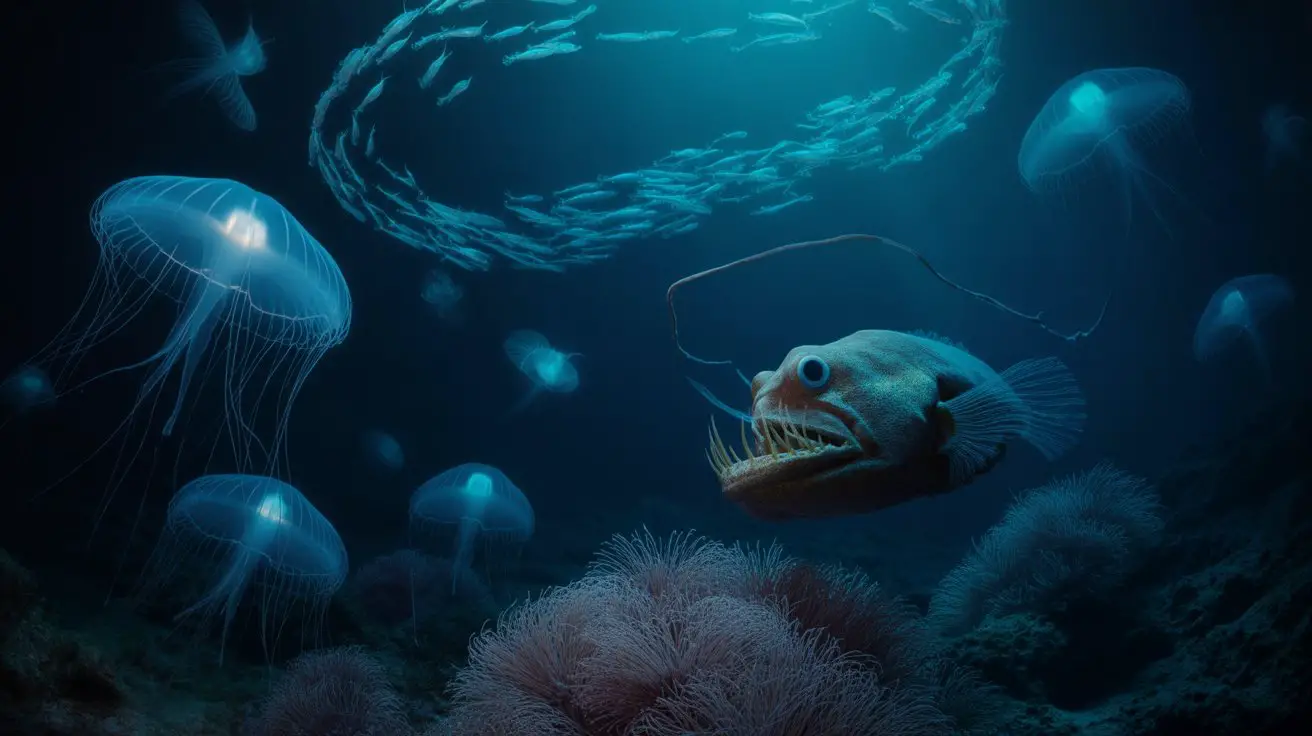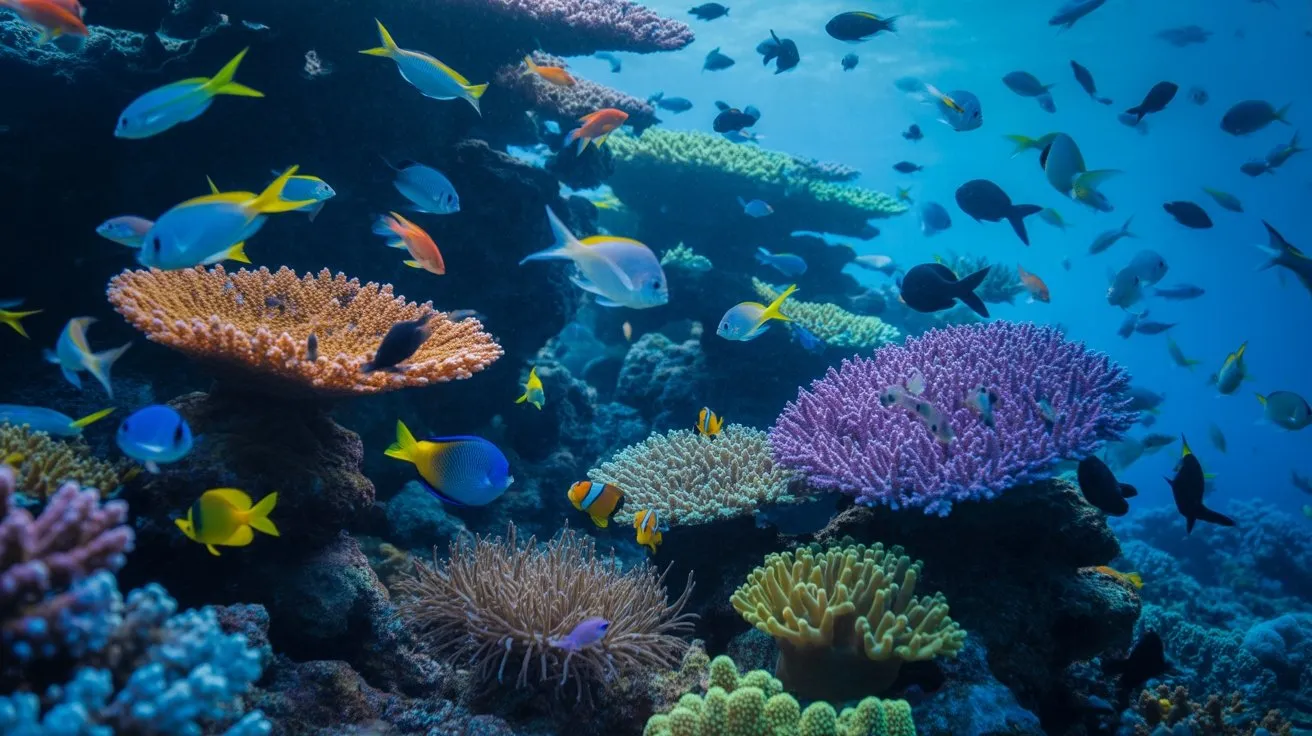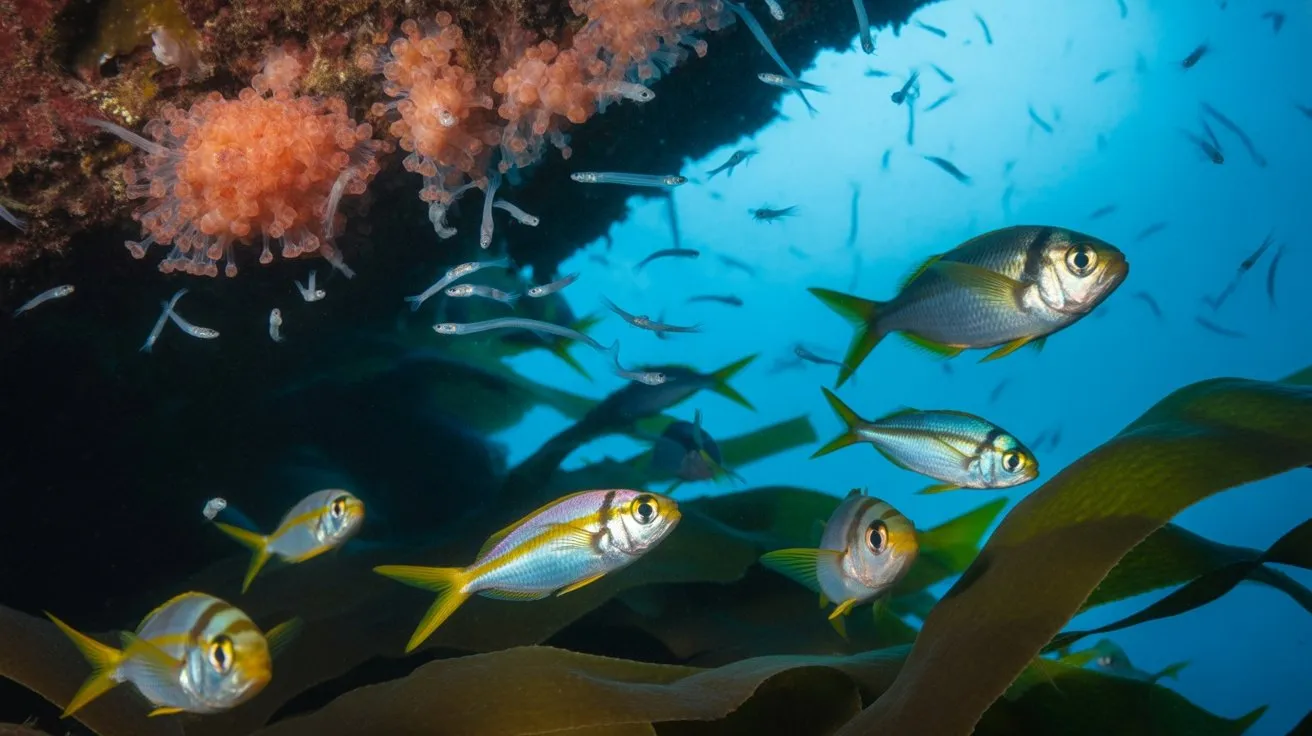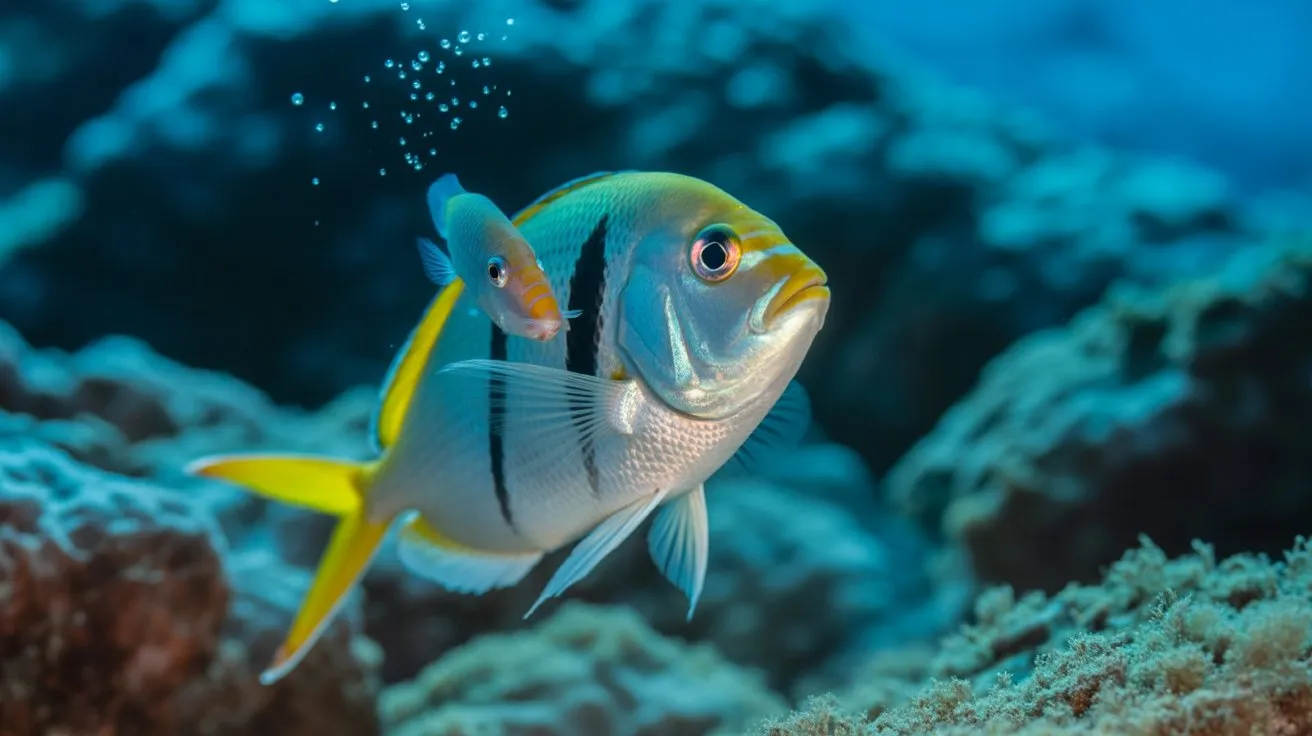When you consider the crushing pressures exceeding 1,100 times atmospheric levels at oceanic depths, you’ll realize that conventional fish physiology simply can’t function. Deep-sea species have undergone extraordinary biochemical modifications—their cellular membranes contain specialized polyunsaturated fatty acids that prevent structural collapse, while their proteins exhibit unique folding patterns resistant to pressure denaturation. Yet pressure adaptation represents merely the first challenge these organisms must overcome to establish viable populations in abyssal environments.
Pressure Resistance: Specialized Body Chemistry and Structure
When fish descend beyond 1,000 meters, they encounter pressures exceeding 100 times atmospheric levels—forces that would instantly crush most surface organisms.
You’ll find deep-sea fish have evolved remarkable adaptations to withstand these extreme conditions. Their cellular membranes contain specialized polyunsaturated fatty acids that maintain fluidity under pressure, preventing membrane collapse.
These fish lack gas-filled swim bladders, which would compress fatally at depth. Instead, they’ve developed pressure-resistant proteins with unique amino acid sequences that don’t denature under extreme pressure. Their enzyme systems function through pressure-adapted conformational structures.
Additionally, trimethylamine oxide (TMAO) accumulates in their tissues, acting as a protective osmolyte that stabilizes protein folding and prevents pressure-induced cellular damage.
Bioluminescence: Creating Light in Eternal Darkness
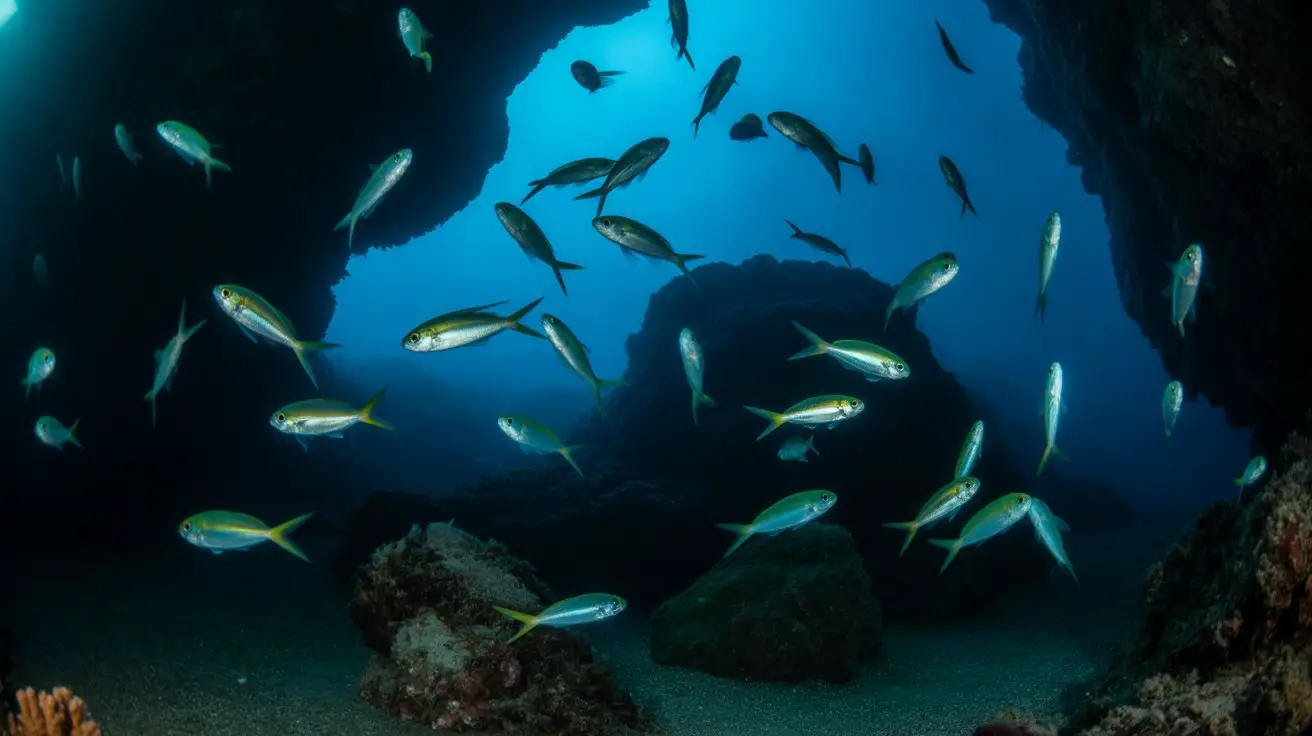
Since sunlight can’t penetrate beyond 1,000 meters, you’ll discover that approximately 90% of deep-sea species have evolved bioluminescent capabilities through specialized photophores—light-producing organs containing luciferin substrates and luciferase enzymes.
These bioluminescent adaptations serve critical survival functions:
- Predator deterrence: You’ll observe counterillumination strategies where ventral photophores match downwelling light, eliminating silhouettes visible to predators below.
- Prey attraction: Anglerfish utilize modified dorsal fin rays as luminescent lures containing symbiotic bacteria that produce continuous light through ATP-dependent reactions.
- Intraspecies communication: Species-specific flash patterns enable mate recognition and territorial signaling through controlled neural activation of photophore clusters.
The biochemical efficiency reaches 96% light conversion, far exceeding artificial sources. This evolutionary advantage compensates for the energy-limited environment where metabolic conservation determines survival success, highlighting how marine pollution can disrupt delicate deep-sea ecosystems.
Energy Conservation: Metabolic Adaptations for Scarce Resources
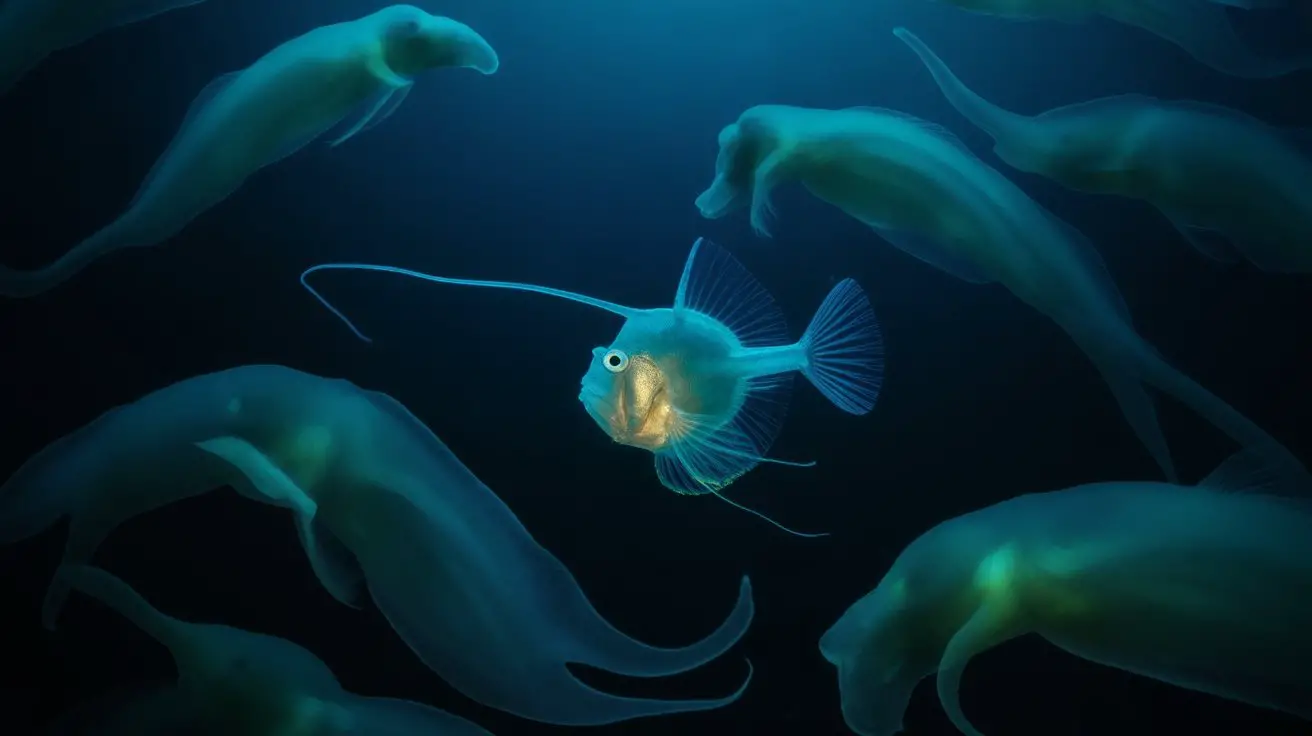
While bioluminescence demonstrates remarkable biochemical efficiency, deep-sea organisms must carefully balance this energy expenditure against the extreme scarcity of food resources in abyssal environments.
You’ll find that deep-sea fish have evolved drastically reduced metabolic rates, sometimes operating at 10-20% of shallow-water species’ baseline metabolism. They’ve developed enlarged livers for lipid storage, utilizing slow-burning fats as primary fuel sources.
Their muscle composition shifts toward white muscle fibers that require less oxygen and energy for maintenance. You’ll observe decreased bone density and cartilaginous skeletal structures that reduce metabolic costs.
Many species exhibit sit-and-wait predation strategies, minimizing unnecessary movement. Their enzyme systems function effectively at low temperatures, maintaining catalytic efficiency while conserving precious energy reserves in nutrient-depleted abyssal waters.
Unique Feeding Strategies in Food-Scarce Environments
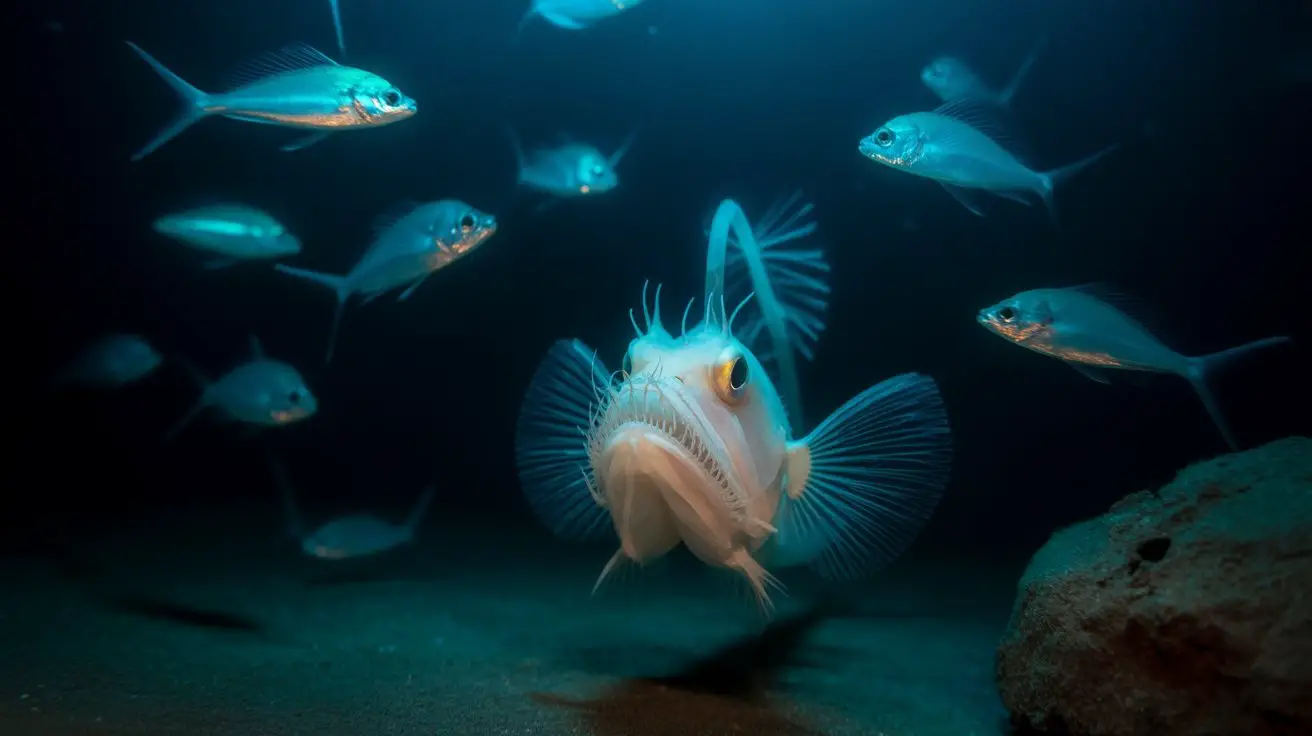
Although metabolic conservation provides essential survival advantages, deep-sea fish must still secure adequate nutrition in environments where food density can be 1000 times lower than surface waters.
You’ll find these organisms have evolved extraordinary feeding mechanisms to exploit limited resources efficiently.
Deep-sea predators employ three primary nutritional strategies:
- Opportunistic hyperphagia – consuming massive quantities when prey becomes available, storing excess energy as lipids for extended fasting periods
- Gape-limitation circumvention – developing expandable jaws and stomachs that accommodate prey items exceeding their own body length
- Chemosensory amplification – utilizing enhanced olfactory and lateral line systems to detect prey from distances exceeding 100 meters
You’ll observe that anglerfish exemplify these adaptations through bioluminescent luring, while gulper eels demonstrate extreme jaw distension capabilities for capturing disproportionately large prey items.
Anatomical Modifications for Deep-Sea Survival

Beyond feeding adaptations, deep-sea fish exhibit dramatic structural modifications that enable survival under crushing pressures exceeding 1000 atmospheres.
You’ll observe that their swim bladders contain specialized gas glands producing trimethylamine oxide (TMAO), which counteracts protein denaturation under extreme pressure.
Their skeletal systems demonstrate reduced ossification, replacing rigid bone with flexible cartilage that won’t collapse.
You’ll notice their enlarged hearts and enhanced circulatory systems compensate for decreased oxygen availability at depth.
Their cell membranes incorporate higher concentrations of unsaturated fatty acids, maintaining fluidity despite cold temperatures reaching 2°C.
Additionally, their muscle fibers contain modified proteins with altered amino acid sequences that function efficiently under high-pressure conditions, ensuring locomotion remains effective.
Reproductive Strategies in Extreme Isolation
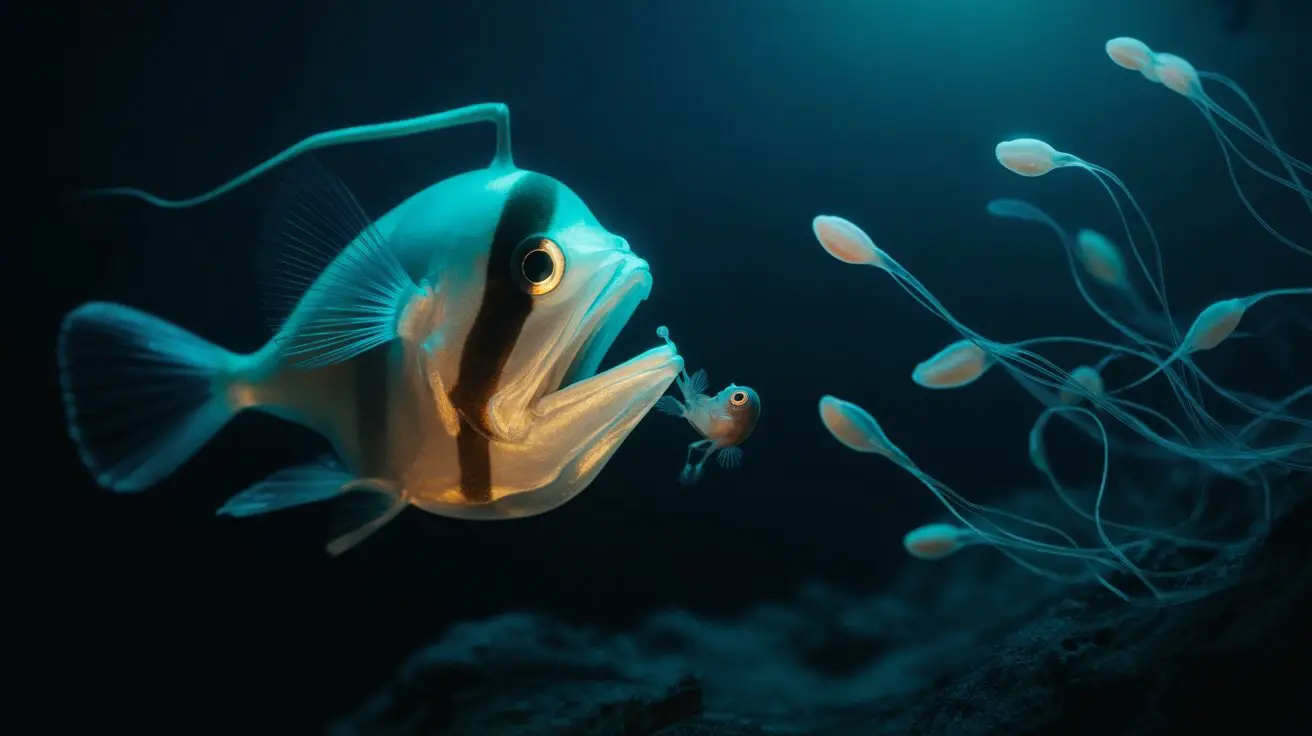
These remarkable physiological adaptations enable survival, yet they’re meaningless without successful reproduction in the deep sea’s vast emptiness.
You’ll find that deep-sea fish have evolved extraordinary reproductive strategies to overcome extreme population dispersal. When potential mates are separated by kilometers of darkness, conventional courtship becomes impossible.
- Sexual parasitism in anglerfish – Males permanently fuse to females, becoming sperm-producing appendages that eliminate mate-finding challenges.
- Hermaphroditism in deep-sea species – Many fish can switch sex or function as both sexes simultaneously, doubling reproductive opportunities.
- Bioluminescent mating signals – Species use species-specific light patterns to attract mates across vast distances in complete darkness.
These adaptations guarantee genetic continuity despite the ocean’s most challenging reproductive environment, where failure means evolutionary extinction.
Conclusion
You’ve witnessed how deep-sea fish master pressure through specialized membranes, harness bioluminescence for survival, and conserve energy through metabolic efficiency. You’ve explored their expandable feeding mechanisms, observed their anatomical modifications, and examined their reproductive strategies. These organisms don’t simply endure extreme conditions—they’ve evolved sophisticated biochemical pathways, developed complex structural adaptations, and perfected energy-efficient systems. You’re observing evolution’s masterpiece: creatures that’ve transformed Earth’s most hostile environment into their ecological niche.
